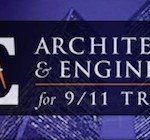Posted on February 13, 2014 by WashingtonsBlog (no defunct)
This is one in a series of safety-related public service announcements.
Death Traps?
Millions of people work in or visit high-rise buildings … assuming the buildings were more or less safe.
But it turns out that there is a severe, lethal risk of sudden collapse in even the best-made skyscrapers in America, Britain, Germany, Japan and other nations worldwide.
A New Understanding
Before 9/11, no modern steel-frame high-rise building had ever collapsed due to fire.
9/11 radically changed our understanding of architecture and engineering …
Specifically, 3 steel-frame buildings collapsed on that day. That includes one that was never hit by a plane, and had only small, isolated office fires prior to its collapse.
This was unexpected, as much hotter, longer-lasting fires have never before brought down a modern steel-frame office building. For example, the 2005 Madrid skyscraper fire “reached 800 degrees Celsius (1,472 F), said Javier Sanz, head of Madrid firefighter” and lasted some 20 hours without collapsing.
In other words, officials who write building codes, architects and structural engineers had never before worried about small office fires causing office buildings from collapsing.
Appendix A of the Federal Emergency Management Agency’s World Trade Center Building Performance Study notes:
In the case of the fire at One Meridian Plaza, the fire burned uncontrolled for the first 11 hours and lasted 19 hours. Contents from nine floors were completely consumed in the fire. In addition to these experiences in fire incidents, as a result of the Broadgate fire, British Steel and the Building Research Establishment performed a series of six experiments at Cordington in the mid-1990s to investigate the behavior of steel frame buildings. These experiments were conducted in a simulated, eight-story building. Secondary steel beams were not protected. Despite the temperature of the steel beam reaching 800-900 °C (1,500-1,700 °F) in three tests (well above the traditionally assumed critical temperature of 600 °C [1,100 °F]), no collapse was observed in any of the six experiments.
Underwriters Laboratories tested the steel components at the Twin Towers and found they could withstand fires for hours without failure:
“NIST [the government agency – National Institute of Standards and Technology, a branch of the Department of Commerce – responsible for investigating the collapse of the 3 buildings on 9/11] contracted with Underwriters Laboratories, Inc. to conduct tests to obtain information on the fire endurance of trusses like those in the WTC towers…. All four test specimens sustained the maximum design load for approximately 2 hours without collapsing… The Investigation Team was cautious about using these results directly in the formulation of collapse hypotheses. In addition to the scaling issues raised by the test results, the fires in the towers on September 11, and the resulting exposure of the floor systems, were substantially different from the conditions in the test furnaces. Nonetheless, the [empirical test] results established that this type of assembly was capable of sustaining a large gravity load, without collapsing, for a substantial period of time relative to the duration of the fires in any given location on September 11.” (NIST, 2005, p. 140).
Other fire tests have also failed to cause failures at high temperatures.
So the collapse of World Trade Center Building 7 on 9/11 (not hit by a plane) was a surprise … and should be a huge concern to the millions of people who work in office buildings worldwide.
To get to the bottom of this issue, Washington’s Blog reached out to a former manager at Underwriters Laboratories – Kevin Ryan – to seek reassurance that the danger was small for the millions of financial services industry workers, business men, lawyers, web executives, and others who work in office buildings:
[Question] Wasn’t the steel used in the Twin Towers and Building 7 of inferior quality? So as long as builders use better-quality steel, can’t we be assured of safety?
[Kevin Ryan] The steel used to build WTC Building 7 was the standard grade for high-rise construction–still used to this day–called ASTM A36 grade steel. It was not inferior in any way from the steel used to make many of the other high-rise buildings in America.
For the Twin Towers, fourteen different grades of steel were used in the construction, including A36, which has a nominal strength of 36 ksi. The other grades used were higher strength steels like 100 ksi WEL-TEN steel which was manufactured in Japan and shipped to the States. The steel used in the Towers was actually far superior to typical structural steel.
The official government reports on the destruction of the WTC buildings did not find any problem with the quality of the materials or construction methods used. And although those reports did make some recommendations for changes to building codes, those changes have not been incorporated in municipal codes or adopted by the building construction community.
[Question] You write in Foreign Policy Journal:
“And if people actually understood and believed the official account of what happened at the WTC they would not enter tall buildings because in doing so they would be putting their lives at risk.”
What do you mean?
[Ryan] What I mean is that high-rise buildings are designed and constructed to withstand fires that are much worse than what we know existed in WTC Building 7. My former company, Underwriters Laboratories (UL), plays a big part in that process. We know that UL did the fire resistance testing that was behind the selection of the steel components for WTC7 because that fact is in the NIST WTC7 report. Therefore the steel columns and floor assemblies should have withstood 2 to 3 hours of intense fire in a testing furnace, as required by the NYC code. But on 9/11, the fire lasted only 20 minutes in any given area, a fact that NIST admits, and the entire structure was destroyed due to an inexplicable failure to resist fire.
Moreover, NIST abandoned its previous hypotheses that suggested the destruction of WTC7 might have resulted from diesel fuel fires, or damage from falling debris, or the design of the building. In the end, NIST said that it was only the effects of the fire fed by office furnishings, on fully-fireproofed steel components, that caused the total destruction of this 47-story building. And since no actions have been taken to retrofit any existing high-rise buildings, we must assume that what happened to WTC7, according to the official account, could happen to any tall building that experiences a typical office fire.
No Change (?!)
Given that 9/11 totally changed our understanding of how dangerous small office fires could be, we couldn’t believe Ryan’s claim that “changes have not been incorporated in municipal codes or adopted by the building construction community.”
So Washington’s Blog contacted Richard Gage, a practicing architect for more than two decades, who has worked on most types of building construction, including one project which used around 1,200 tons of steel framing:
[Question] Have high-rise architects and engineers changed how they build skyscrapers, to prevent collapses after 9/11?
And have they changed how they build skyscrapers to prevent office fires from knocking down steel buildings?
[Richard Gage] No – they haven’t made any structural changes.
No structural changes?!
Either building code writers, architects and engineers are cavalierly ignoring this catastrophic new understanding of the extreme danger of small office fires, or the investigation into the collapse of World Trade Center building 7 on 9/11 was flawed.
No wonder New York residents have launched a High Rise Safety Initiative to try to protect the safety of those who work or visit office buildings.
Postscript: Until this issue is resolved through a complete revision of building codes and architectural and engineering practices, we recommend that everyone stay out of office buildings. Because if even small office fires can cause the whole building to collapse, it’s just not worth the risk to go inside.

























